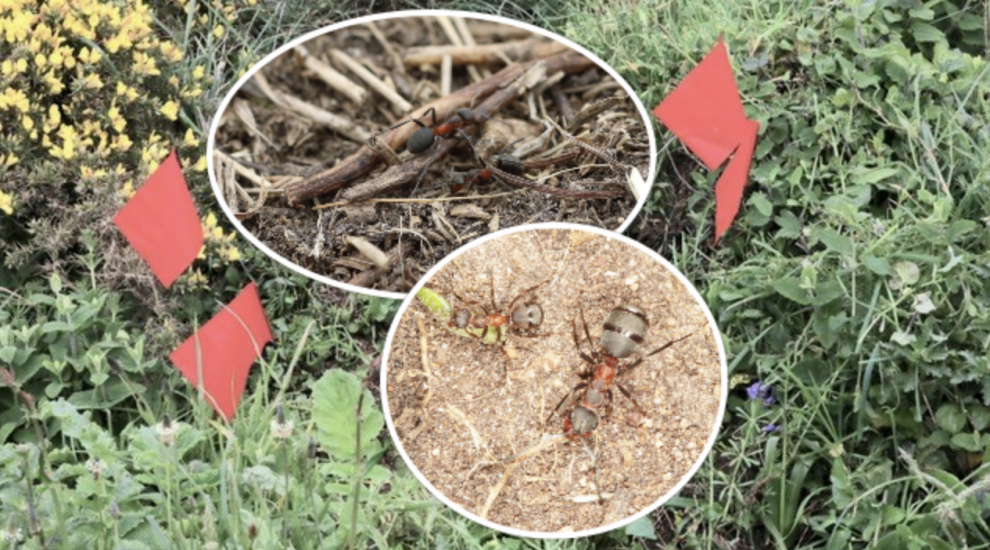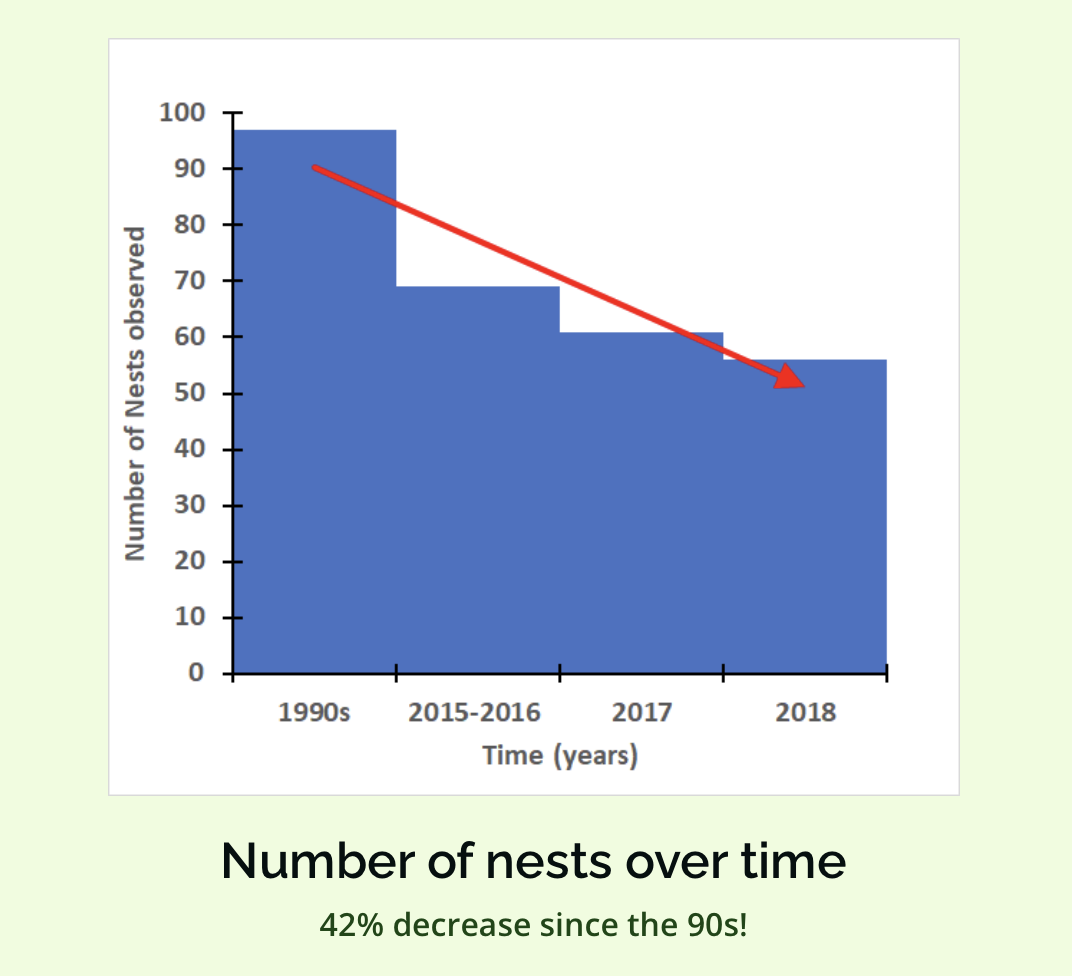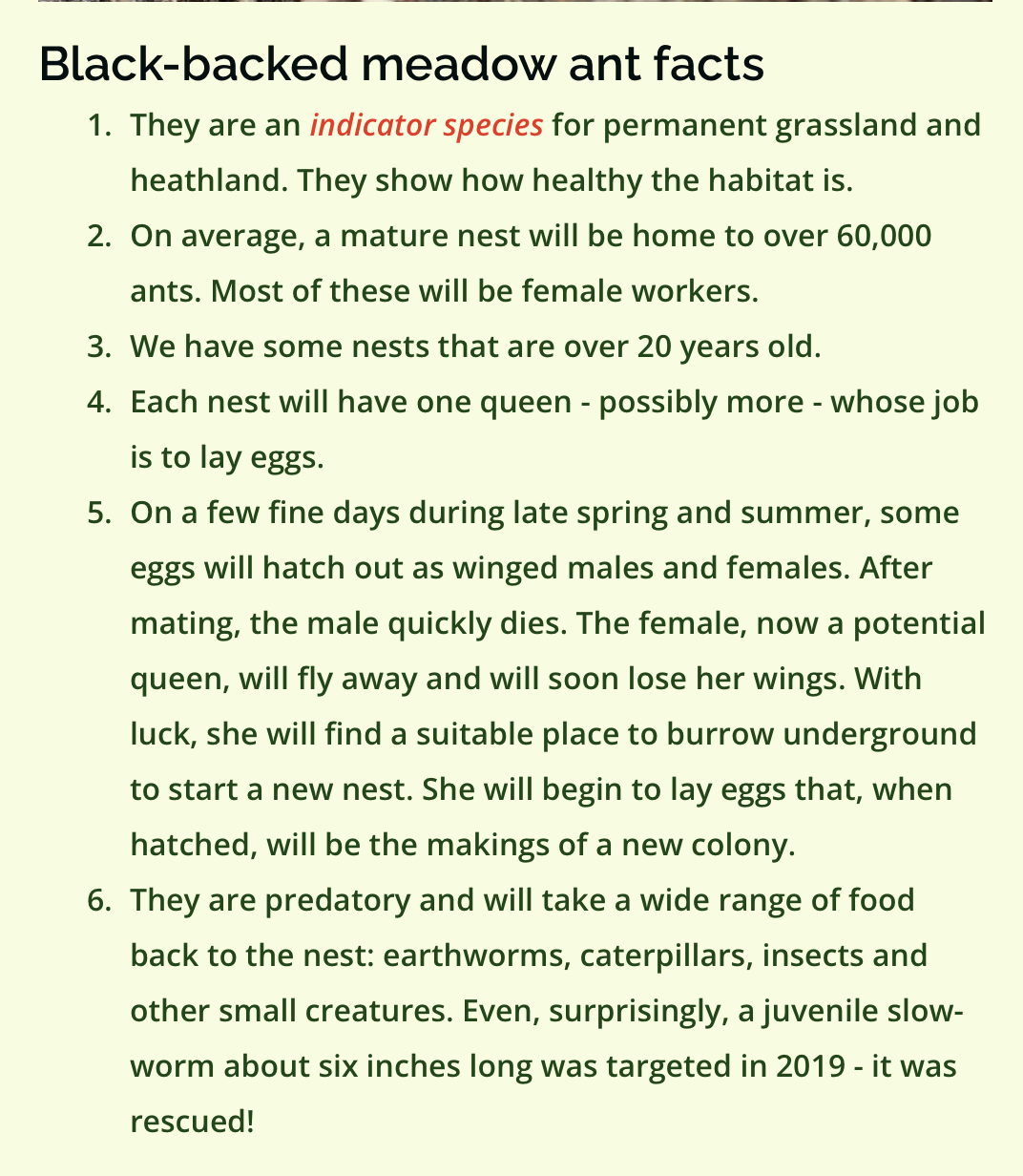


Guernsey's Black-Backed Meadow Ant population has been given a better chance of survival with the annual cliff path cutting season getting underway.
Clearly marked with little red flags, their nests are reliant on being warm and dry to provide the best habitat for the insect.
The rare species is in decline with the large ant now extinct in the UK.
Plenty are living on Guernsey's south coast cliffs but they need light and air to thrive so they depend on the vegetation around their nests being regular cut back.

Pictured: Information from the Guernsey Biological Records Centre website.
Agriculture, Countryside and Land Management Services and States Works work with the Black-Backed Meadow Ant project to ensure the ants have the best chance of surviving.
This includes marking all nests between Pleinmont and Icart so that the cliff path team can give special attention to cutting when they see a red flag. This increases the light and air around the ants' nests, making them warmer and drier. This is particularly important following the wetter and colder winter conditions
It's acknowledged that without a regular cutting regime on the cliff paths, their habitat would be lost and succeeded by scrubby vegetation as opposed to the grassland and heathlands they can thrive in.

The 2023 programme of vegetation cutting along the verges of the island’s cliff paths recently started at Petit Bot, heading east.
ACLMS is responsible for this maintenance programme, which covers the 28.5 miles of cliff paths between La Vallette and Fort Pezeries. The paths are cut twice a year with weather conditions determining when the first happens. In general the cut begins between the third week of April and second week of May with the first cliff path cut usually completed by mid-July.
This is then repeated later in the year with the second cut usually completed by around mid-October.
The cutting schedule rotates through the different sections along the cliff paths to ensure that areas do not get cut at exactly the same time in their growth period each year.
It is said to be "inevitable that some plants will be cut back whilst they are still in bloom" but by rotating the cuts, the workers can ensures there is always a well-stocked seed bank from previous years so that future displays can grow too.
Richard Langmead, Manager of the Land Management team at States Works, said the work is skilled with a well trained team working on the project each year.
“The States Works team cutting the paths is very experienced, with some members who have been doing the job for over twenty years. The team is knowledgeable on the wild plants found on the cliffs and take special care of the areas where orchids and other less common plants are to be found,” he said.
Emily Coule, ACLMS Natural Environment Officer said anyone who spots something of interest can report it to the Biological Records Centre.
“Cutting the cliff paths not only allows access for members of the public to engage with nature, it is also beneficial to Guernsey’s biodiversity as it stops more aggressive vegetation taking over. The cliff paths have a unique place in Guernsey’s biodiversity as they are home to many rare plants such as the dwarf pansy, shaggy mouse-ear hawkweed and early sandgrass.”
Comments
Comments on this story express the views of the commentator only, not Bailiwick Publishing. We are unable to guarantee the accuracy of any of those comments.